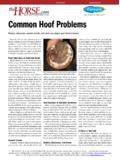Transcription of Lyme Disease: What you need to know
1 lyme Disease: CS 289254-AWhat you need to know How it s spread Where it s found How it s prevented How it s diagnosed How it s treated1 lyme DiseaseLyme disease is caused by bacteria called Borrelia burgdorferi and is transmitted to humans through the bite of infected blacklegged ticks. Typical symptoms include fever, headache, fatigue, and a characteristic skin rash called erythema migrans. If left untreated, infection can spread to joints, the heart, and the nervous system. lyme disease is diagnosed based on symptoms, physical findings ( , rash), and the possibility of exposure to infected ticks; laboratory testing is helpful if used correctly and performed with validated methods.
2 Most cases of lyme disease can be treated successfully with a few weeks of antibiotics. Steps to prevent lyme disease include using insect repellent, removing ticks promptly, applying pesticides, and reducing tick habitat. How ticks spread lyme diseaseLyme disease bacteria , Borrelia burgdorferi, are spread through the bite of infected ticks. The blacklegged tick (or deer tick, Ixodes scapularis) spreads the disease in the northeastern, mid-Atlantic, and north-central United States, and the western blacklegged tick (Ixodes pacificus) spreads the disease on the Pacific Coast. These ticks are usually found in wooded areas and have complex life cycles.
3 In some regions, blacklegged ticks can spread other diseases in addition to lyme disease , including babesiosis and anaplasmosis. In general, ticks need to be attached for 36 to 48 hours before they can transmit lyme disease bacteria . Ixodes ticks are much smaller than the common dog and cattle ticks. In their larval and nymphal stages, they are no bigger than a pinhead. Adult Ixodes ticks are larger, about the size of a small apple seed. Left to right: adult female, adult male, nymph, larva. (Not to scale.) lyme disease is an infection caused by the corkscrew-shaped bacterium Borrelia burgdorferi, a member of the family of humans are infected through the bites of immature ticks called nymphs.
4 Nymphs are tiny (less than 2 mm) and difficult to see; they feed during the spring and summer ticks can also transmit lyme disease bacteria , but they are much larger and may be more likely to be discovered and removed before they have had time to transmit the bacteria . Adult Ixodes ticks are most active during the ticks search for host animals from the leaf litter on the forest floor or from the tips of grasses and shrubs. Ticks crawl onto animals or people as they brush against them; ticks cannot jump or fly. Ticks found on the scalp usually have crawled there from lower parts of the body. Ticks obtain blood by inserting their mouth parts (not their whole bodies) into the skin of a person or animal.
5 Ixodes ticks are slow feeders: one meal can take several days. As they feed, their bodies slowly risk of exposure to ticks is greatest in the woods and in the edge area between lawns and woods; however, ticks can also be carried by animals onto lawns and gardens and into houses by pets. Campers, hikers, outdoor workers, and others may be exposed to infected ticks in wooded, brushy, and grassy places. People who spend time in heavily wooded areas where infected ticks are common are at higher risk for exposure. Although in theory lyme disease could be spread through blood transfusions or other contact with infected blood, there are no known cases Photo courtesy of Durland can attach to any part of the human body but are often found in hard-to-see areas such as the groin, armpits, and scalp.
6 In most cases, the tick must be attached for 36-48 hours or more before the lyme disease bacterium can be transmitted. Shown is an attached Ixodes this happening. There is no evidence that lyme disease is transmitted from person-to-person through touching, kissing, or having sex with a person who has lyme disease . There are no reports of lyme disease transmission through breast milk. Places where you are most likely to get infected lyme disease is distributed over a wide geographic area in northern temperate regions of the world. In the United States, most infections occur in the following areas: Northeast, from Virginia to Maine North-central states, mostly in Wisconsin and Minnesota West Coast, particularly northern CaliforniaFor lyme disease to exist in an area, three elements must be present in the natural environment: 1) animals that are infected with lyme disease bacteria , 2) ticks that can transmit the bacteria ,and 3) animal hosts (such as mice and deer) that can providefood for the ticks in their various life stages.
7 Ticks that transmit lyme disease bacteria need constant, high relative humidityat ground you can do to protect yourselfYou can decrease the chances of being bitten by a tick with a few precautions. Avoid tick-infested areas. This is especially important in May, June, and July. Many local health departments and park or extension services have information on the local distribution Reported Cases of lyme disease - United States, 20161 dot placed randomly within county of residence for each confirmed caseThrough lyme disease cases have been reported in nearly every state, cases are reported from the infected person s county of residence, not the place where they were ticks.
8 If you are in tick-infested areas, walk in the center of trails to avoid contact with overgrown grass, brush, and leaf litter at trail edges. Use insect repellent. Use Environmental Protection Agency (EPA)-registered insect repellents containing DEET, picaridin, IR3535, oil of lemon eucalyptus, para-menthane-diol, or 2-undecanone. Always follow product instructions. You can also treat clothes (especially pants, socks, and shoes) with permethrin, which kills ticks on contact, or buy clothes that are pre-treated. Permethrin can also be used on tents and some camping gear. Do not use permethrin directly on skin. Always follow the manufacturer s instructions when applying repellent.
9 Perform daily tick checks. Always check for ticks after being outdoors, even in your own yard. Because ticks must usually be attached for at least a day before they can transmit the bacteria that cause lyme disease , early removal can reduce the risk of infection. Inspect all body surfaces carefully, and remove attached ticks with tweezers. Avoid crushing the tick s body. DO NOT use petroleum jelly, a hot match, nail polish, or other products. Grasp the tick firmly and as close to the skin as possible. With a steady motion, pull the tick s body away from the skin. Do not be alarmed if the tick s mouthparts remain in the skin.
10 Cleanse the area with rubbing alcohol or soap and removalRepellent use5 Bathe or shower. Bathe or shower as soon as possible after coming indoors (preferably within 2 hours) to wash off and more easily find ticks that are crawling on can get a ride indoors on your clothes. After being outdoors, tumble dry clothing in a hot dryer for 10 minutes to kill any ticks that are attached to clothing. Recognize the signs and symptoms of lyme disease and act quicklyThe early diagnosis and proper treatment of lyme disease are important strategies to avoid the costs and complications of late-stage illness. As soon as you notice a characteristic rash or other possible symptoms, consult your health care lyme disease : The early stage of lyme disease is usually marked by one or more of the following signs and symptoms: a characteristic skin rash, called erythema migrans fatigue chills and fever headache muscle and joint pain swollen lymph nodesErythema migrans is a red circular rash that often appears at the site of the tick bite, usually within 3 to 14 days after the bite of an infected tick.















